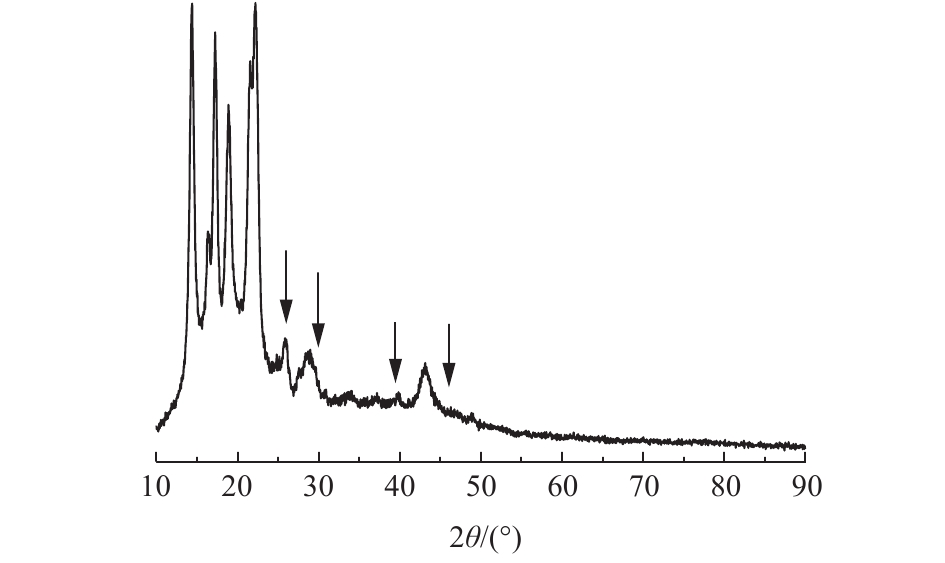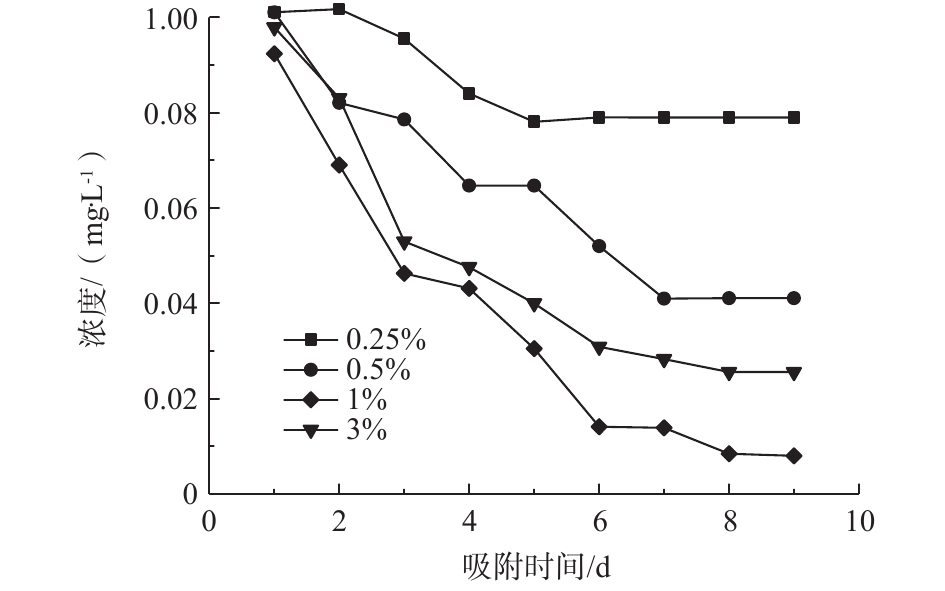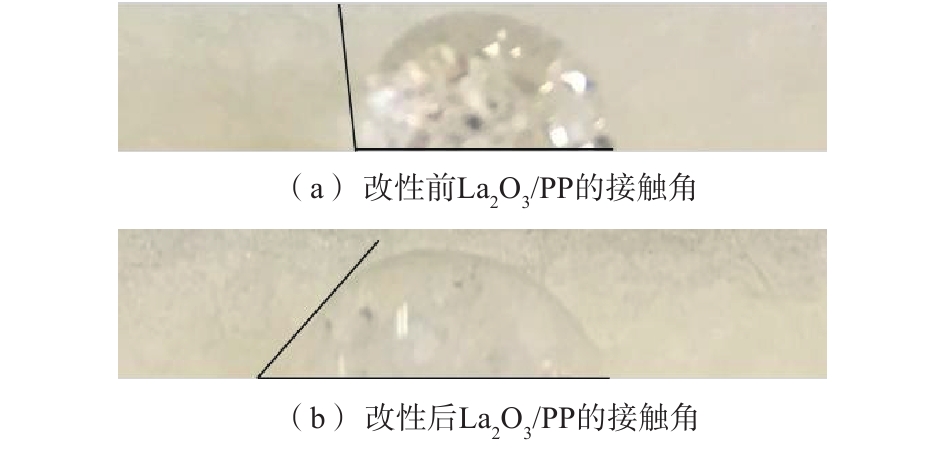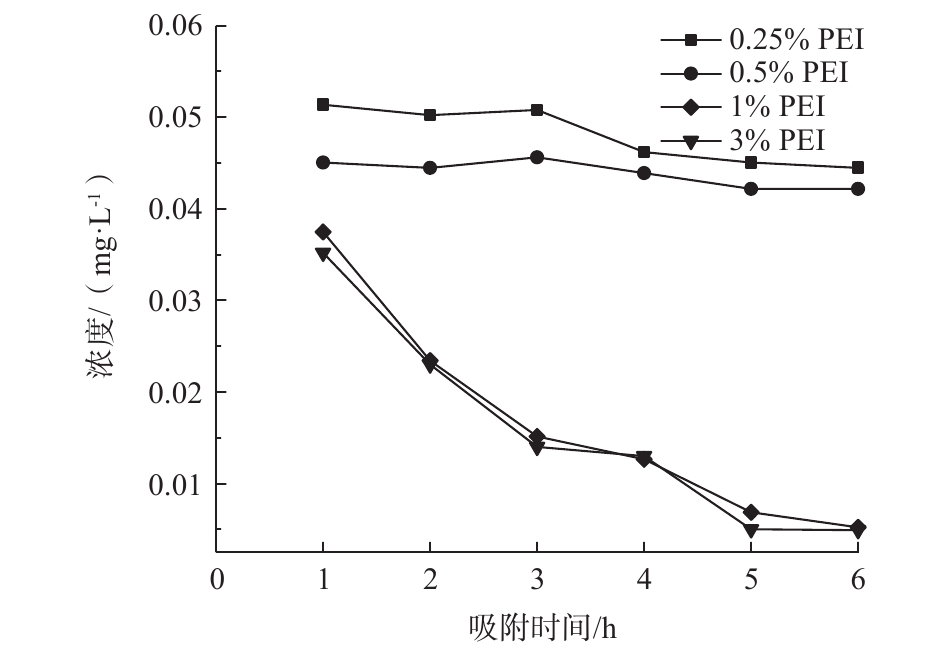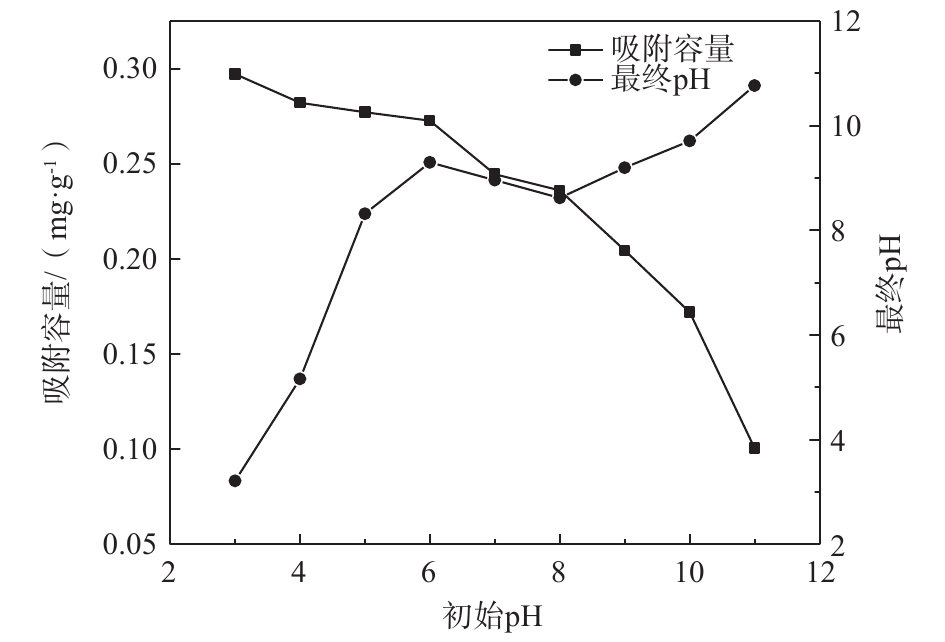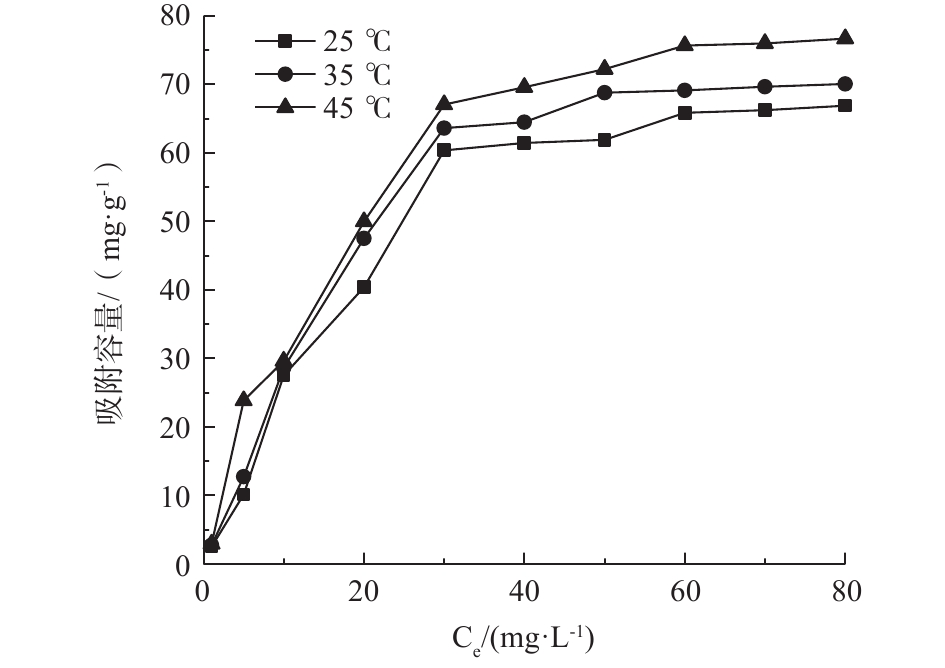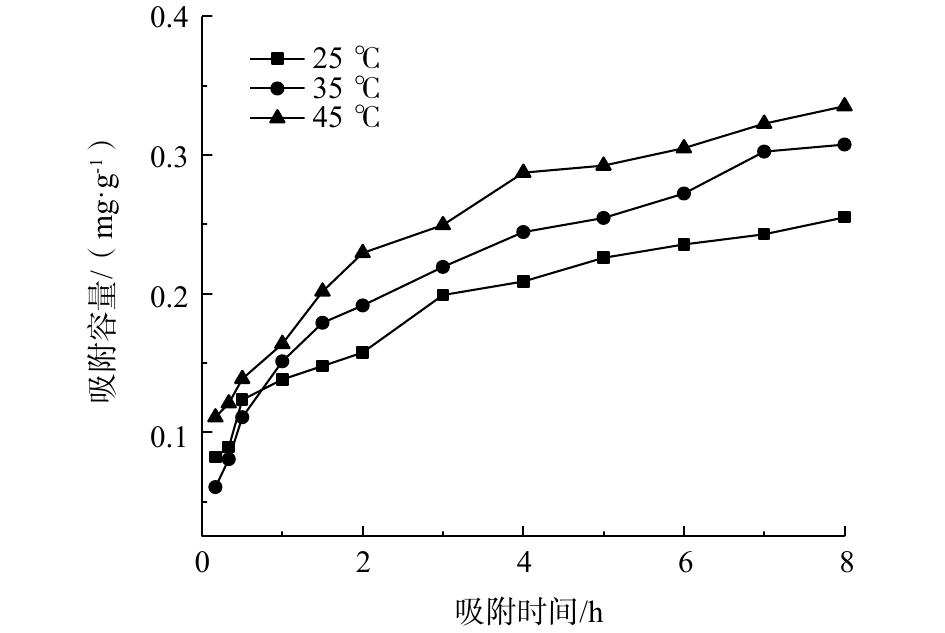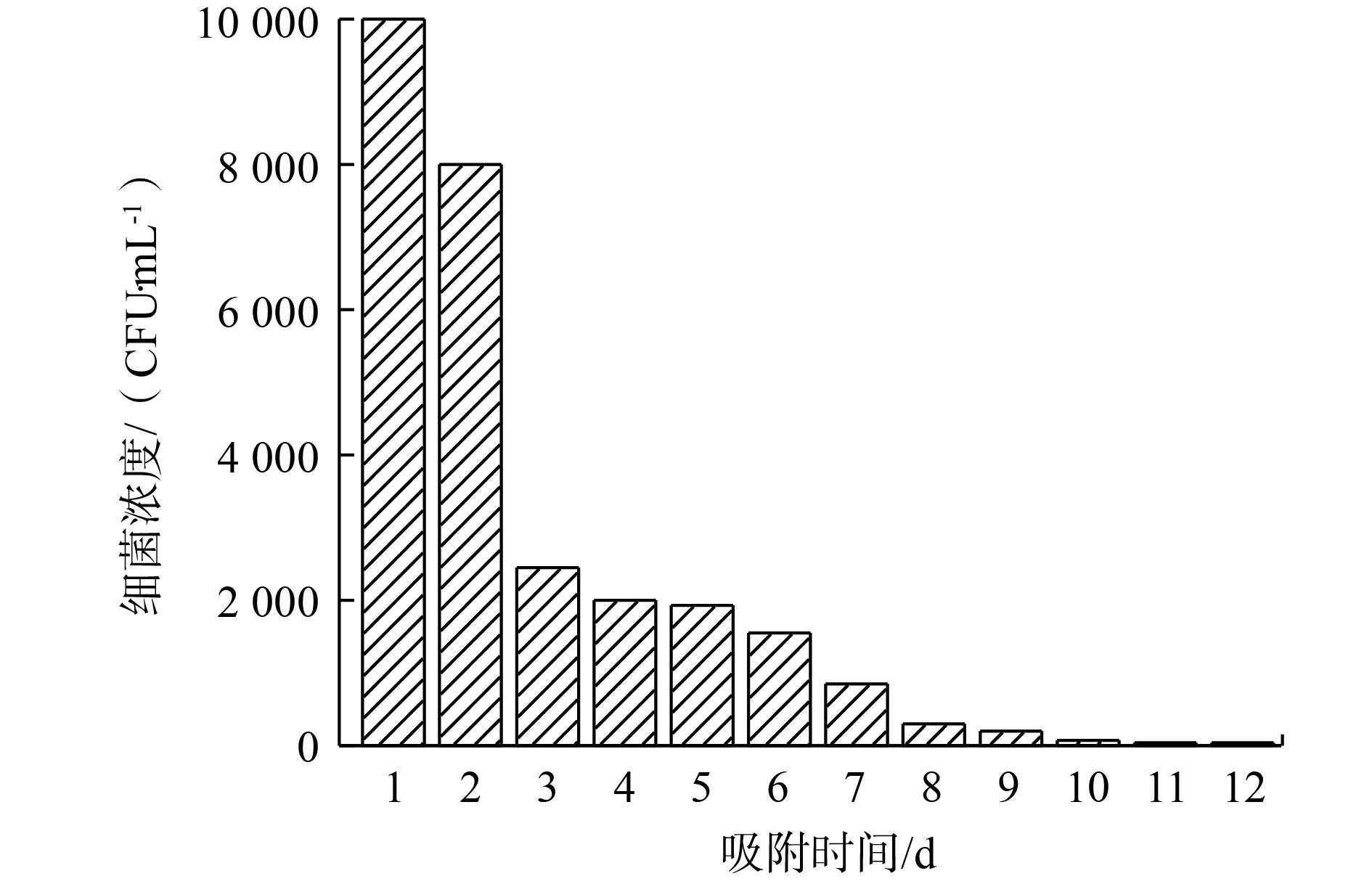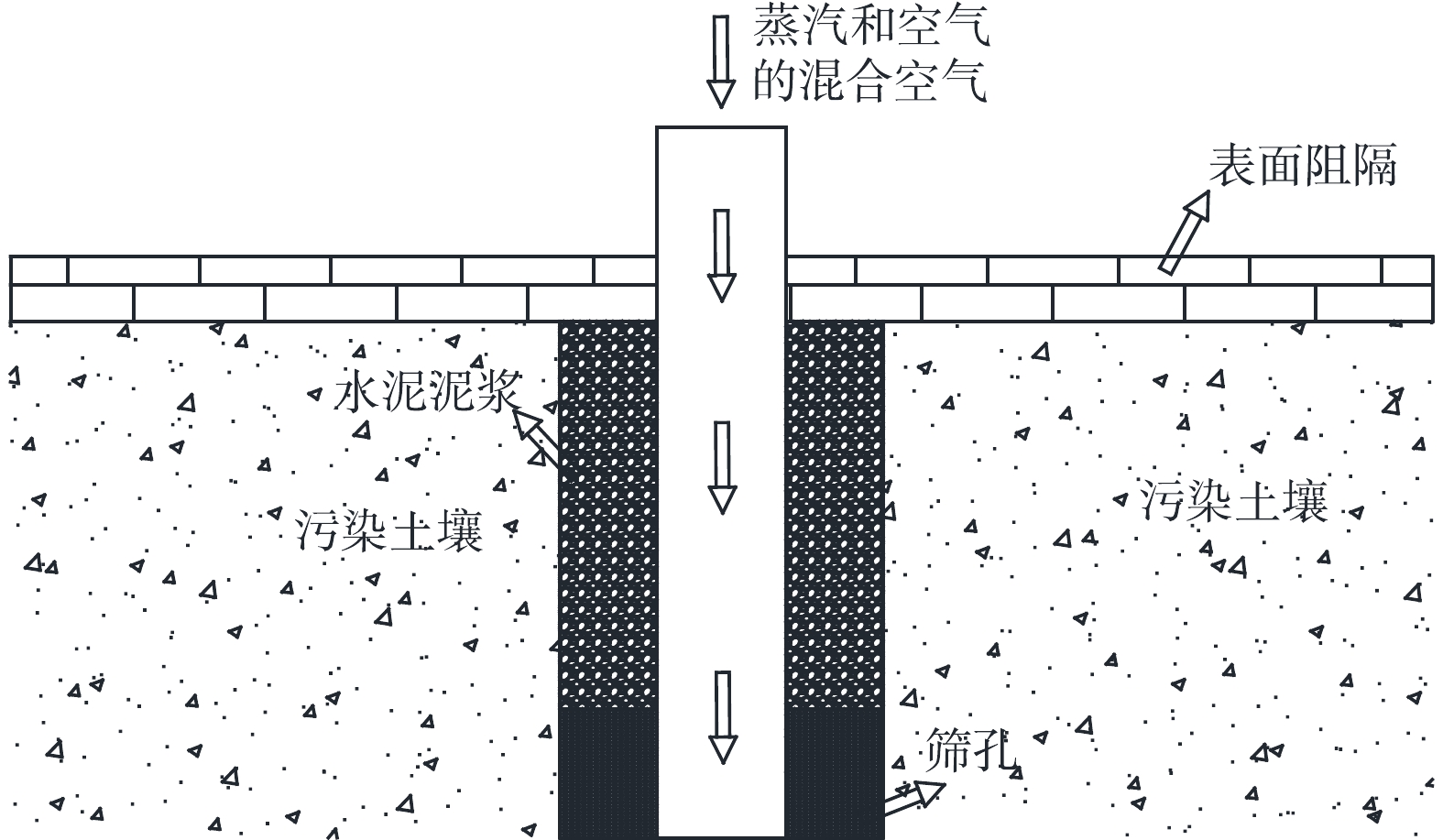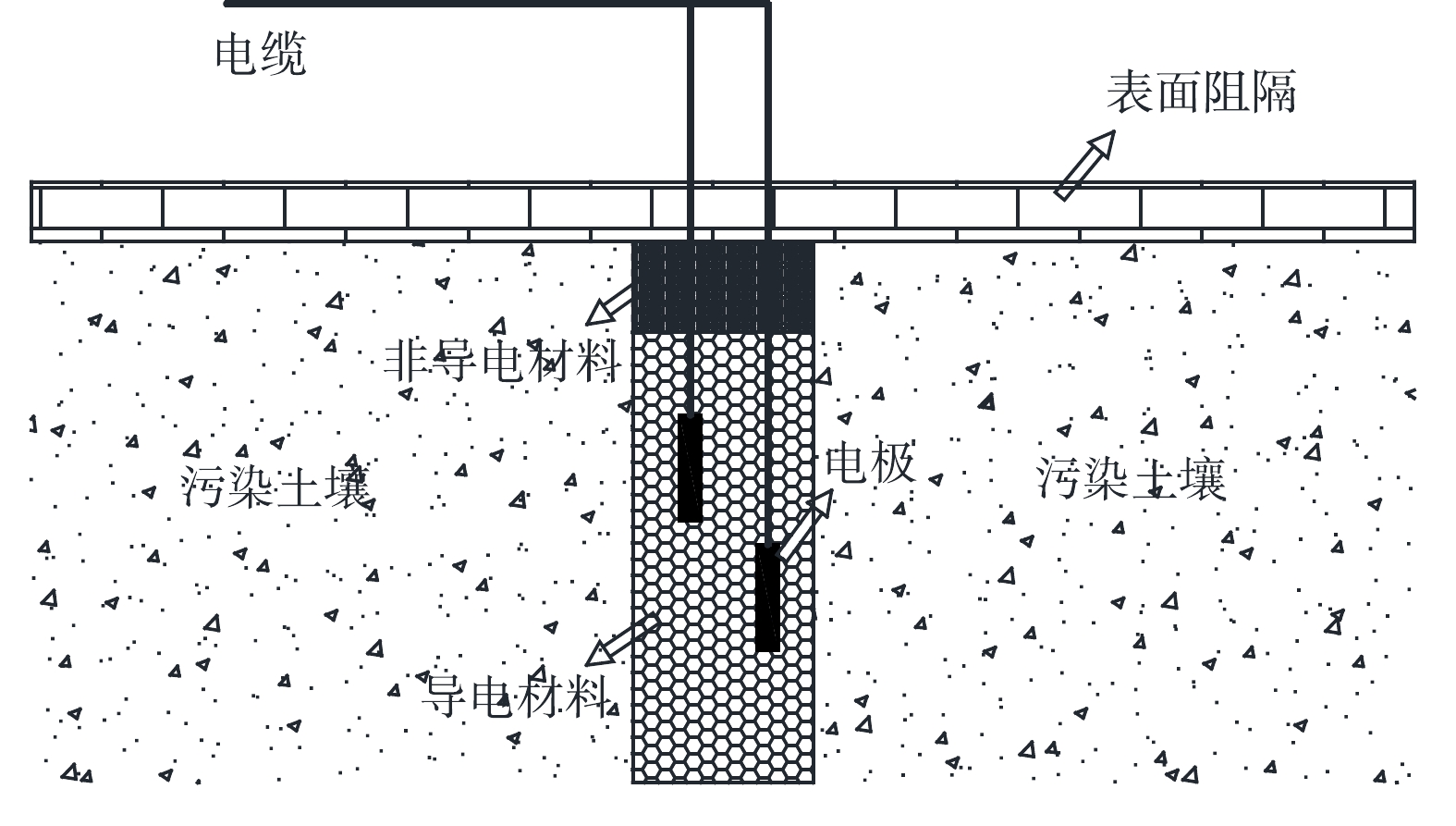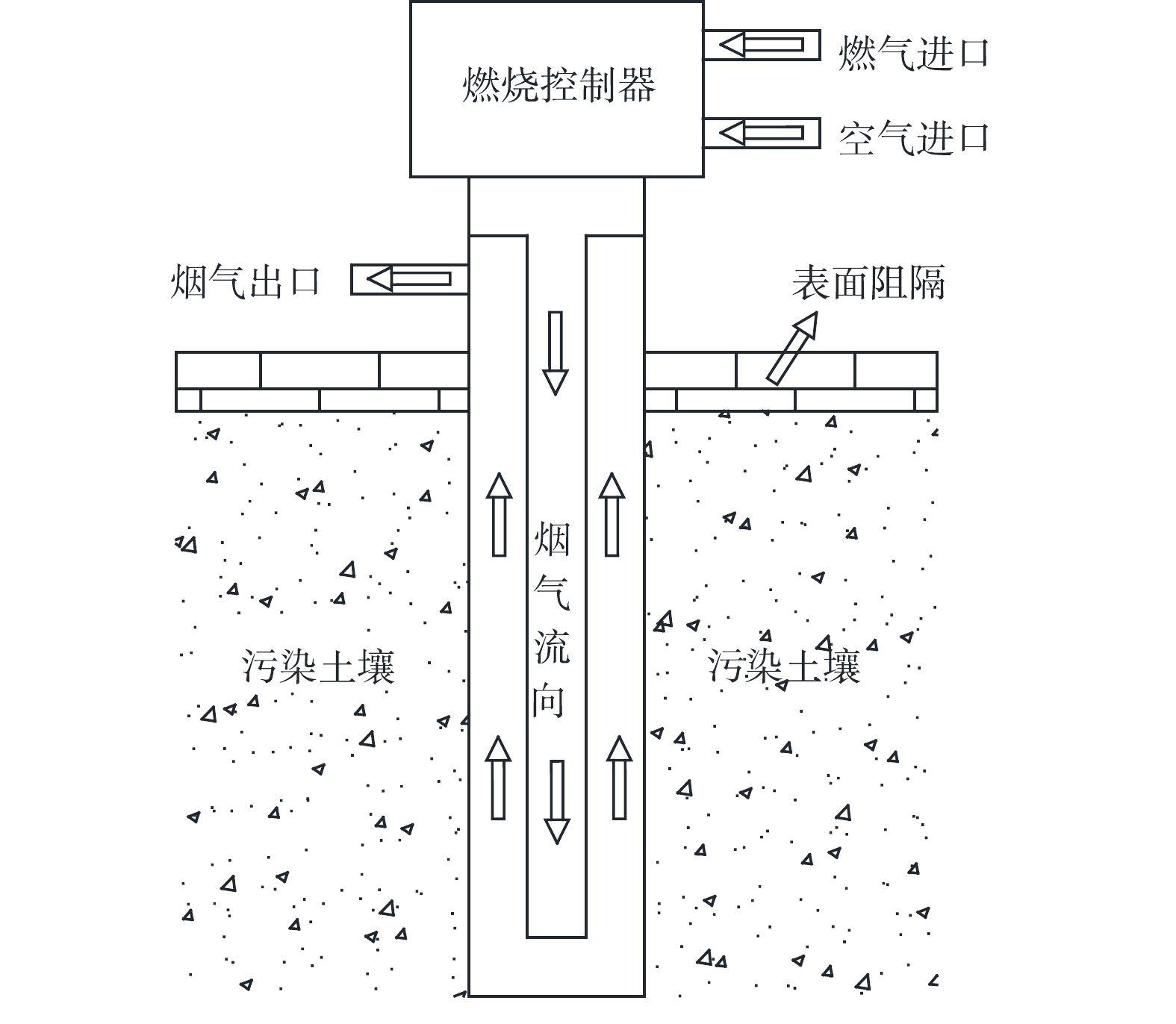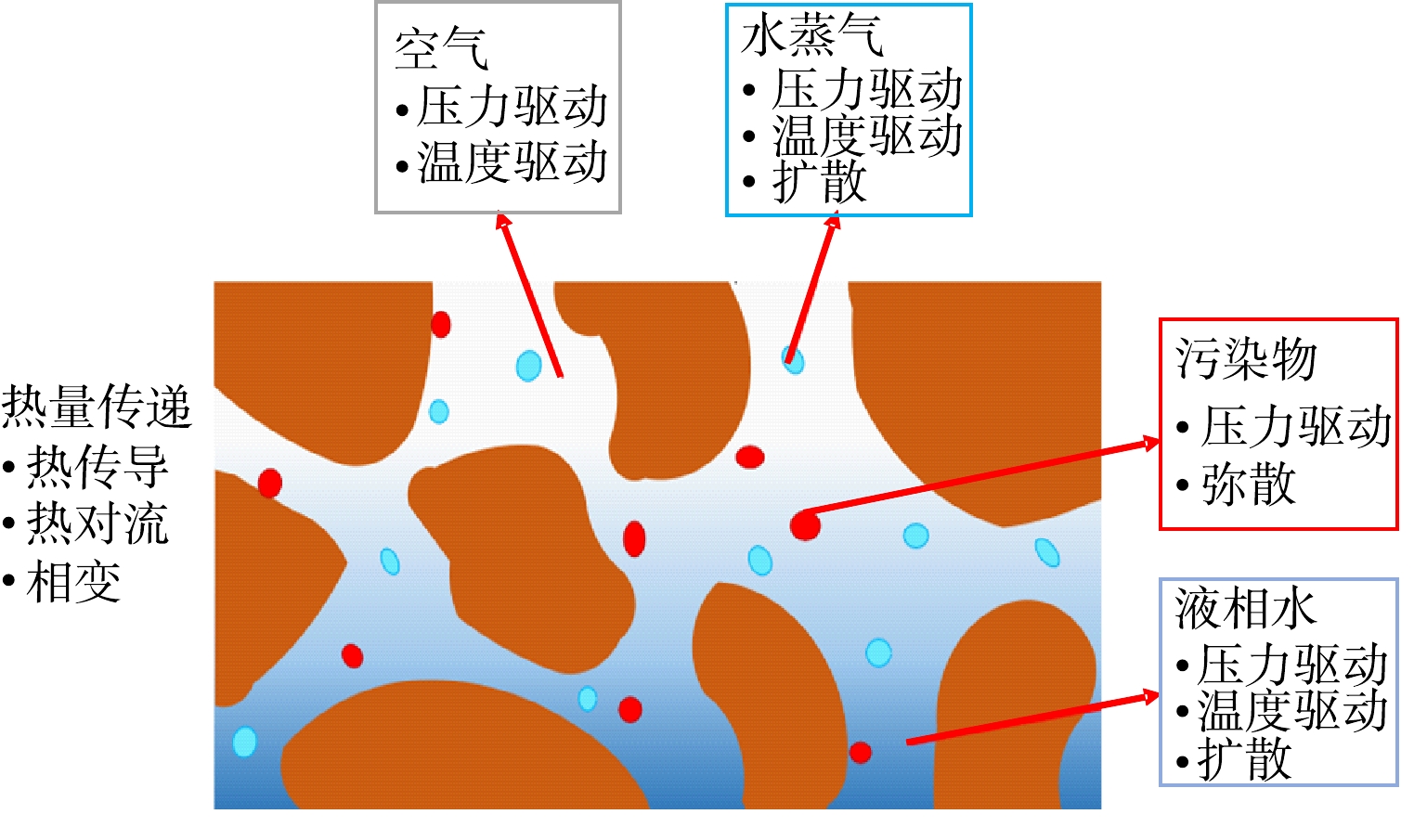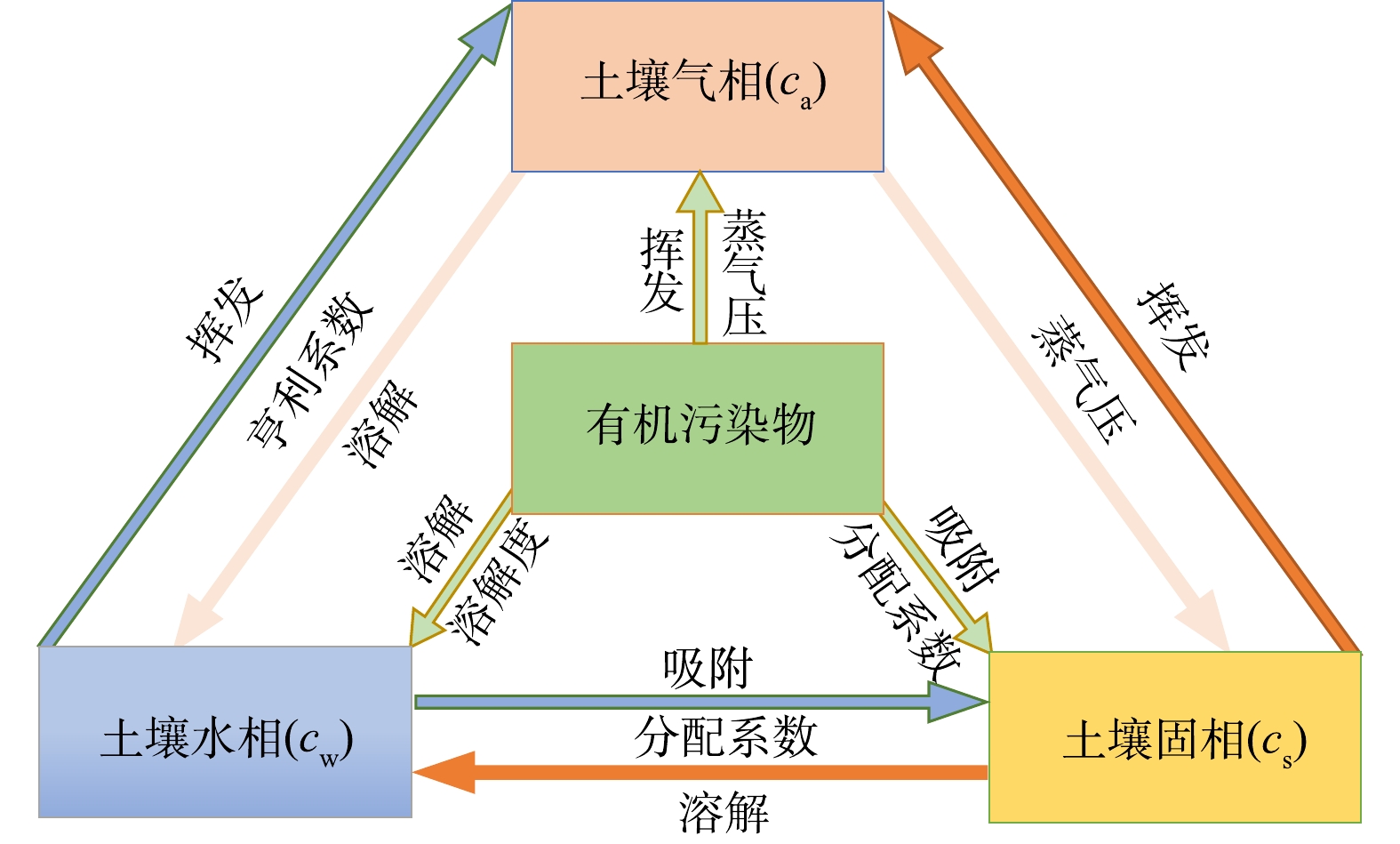-
近年来,土壤污染问题日益严重。我国人口众多、可利用土地资源少,污染土壤修复问题已成为关注重点[1]。有机污染(农药、石油烃和多环芳烃)场地面积约占全国超标土壤的35.49%[2],高于其他类型的土壤污染。由于污染物种类繁多,污染场地土壤类型多样、空间差异大,对土壤修复技术提出了较高要求。现有的土壤修复技术正朝着5大方向发展,即绿色友好的生物修复、联合组配的原位修复、综合修复、基于设备化的快速场地修复和基于环境功能材料的修复[3-4]。原位热修复技术因其适用范围广、环境干扰小、修复效果彻底和可操作性强等优势受到广泛关注[5]。原位热修复技术是少数几种能够去除NAPL的技术之一,并且涉及使用载气或真空系统,该系统将挥发的污染物吹扫到气体处理系统,方便进行二次或异地处置。但是,由于土壤水分和异质性带来的复杂性,使得原位热修复技术大规模应用具有挑战性[6]。
污染土壤修复技术早在二十世纪70年代就已在国外开始应用[4],近年由于国内原位热修复需求日益增多,相关技术被逐步引进。根据加热方式不同,原位热修复技术主要分为蒸汽强化抽提技术(Steam-Enhanced Extraction, SEE)、电阻加热技术(Electrical Resistive Heating, ERH)和热传导加热技术(Thermal Conduction Heating, TCH)3种[7]。对于上述3种原位热修复技术,由于其加热机制不同,所适用的场合也各不相同。如SEE技术,仅适用于低沸点、高渗透率的污染物场地,其修复效率低但修复成本也较低;ERH技术同样仅适用于低沸点污染物,但其升温效率和温度均匀性较好;而TCH技术可适用于含高沸点污染物场地,修复效果彻底、周期短,但其修复方式粗犷,成本较高。表1对比了3种典型原位热修复技术的优缺点和各自适用场合。
虽然原位热修复技术的工程应用已较为成熟,积累了丰富的工程经验,但其内在的热质传递机理尚不清晰,由此,导致工程设计往往仅依赖于实践经验而缺乏相关理论指导。本综述将分别从理论、实验、数值研究等方面对原位热修复过程中土壤内热质传递的研究现状与进展进行讨论与分析,以期能够推动土壤原位热修复技术的优化,为工程应用提供参考。
-
SEE技术由于其具有易操作、成本低等优势,早期被广为使用。 KINGSTON等[14]、康绍果等[15]在研究中提到,自1988年到2007年蒸汽加热技术的应用案例为46例,占总原位加热处理技术的25.2%。SEE技术的工作原理如图1所示,高温蒸汽或热空气通过加热井注射到深层土壤,提高污染区域温度,使得非水相液体污染物(Non-aqueous Phase Liquids, NAPLs)发生解析、溶解和蒸发,在注入气体的推动下移动至抽提区附近进行收集和后处理[16-18]。其热质传递机理为,在高温蒸汽作用下,NAPLs粘度降低、移动性增强;同时,当蒸汽与NAPLs混合时可能发生正共沸,从而降低了沸点。
SEE技术修复非水相液体污染物NAPLs的效果受其性质影响[19],如黏度和挥发性。当污染土壤内通入高温蒸汽,在毛细管压力和重力的共同作用下,驱动NAPLs、水和蒸汽的共同流动。SEE技术和轻油采集技术等都是通过注入高温蒸汽增强剩余非水相液体到蒸汽相的传质的方法,使得进入蒸汽中的NAPLs被运输到运移的前端并凝结,从而降低原NAPLs的黏度,并且高温蒸汽还增加特定区域的蒸汽压和分子扩散系数,其传热效果使NAPLs热膨胀,相对渗透率增大,这些机理的综合作用导致了NAPLs性质改变,蒸汽驱动效率高。
非均质性是SEE技术重要影响因素[20]。作为典型多孔介质的土壤,它的非均质性主要影响了修复区域的气体通透性,较容易形成优势通道,使得气体流经修复区域时沿着优势通道运移,因而出现“绕流”现象,减少了NAPLs随气流的去除量。土壤的非均质性还影响了热量的传递,使热在修复区域前进不均匀,这将导致去除效率的降低。土壤的非均质性会造成吸附性不一致,吸附性越大,去除效果越小。其他如通风流量、土壤含水率、污染物的饱和蒸汽压等也对该技术的修复有一定影响[21-23]。
-
ERH技术是一种基于焦耳定律发热原理对土壤进行加热的修复方式[15],其原理图如图2所示。ERH的实现方法是将异相电极装在污染场地的不同位置,当通入电流时,土壤、电极和地下水形成回路并产生热量,从而加热土壤。当土壤温度接近沸点时,水分快速蒸发,此时水蒸汽携带污染物蒸汽向上运动;同时,由于水分的挥发,导电性降低,因此,在修复过程中需不断补充水分。有研究表明,电阻加热技术能使土壤快速达到100 ℃[9],但由于水分和土壤孔隙结构的限制,最高达到的温度约120 ℃。ERH技术并不是直接去除地下污染物,而是在物理、化学和生物条件方面产生变化,促进污染物从地下清除或就地转化为潜在的无毒物质[24]。
在ERH技术修复过程中,含水率的影响至关重要[25]。有实验证明了含水量较高的土壤,其升温速率也高于干燥土壤[26]。此外,水分还能与特定污染物发生正共沸,从而有利于污染物的解析和挥发。HAN等[27]利用实验室规模ERH设备研究了多环芳烃去除效率的影响因素,水与多环芳烃发生正共沸被证实是ERH去除多环芳烃的主要机理。
电相分布是影响ERH技术修复效果的另一因素[28-30]。近年来,三相系统和六相系统已经发展成为加热低渗透层的可靠技术[31-33]。相比三相系统,六相系统加热均匀性更强,可有效防止加热区域中出现未升温区域,但是由三相电转化为六相电的成本较高[12],大规模应用受限,六相系统适用于对加热均匀性有硬性要求的实验或工程实践。目前,六相系统多应用于小试研究,而三相系统多用于现场[8]。有研究表明,电加热引起的热力学变化可以有效去除淤泥和粘土的氯化溶液[33-34]。电相之间的变换有利于加热区域的均匀性分布,六相系统加热土壤能提高污染物的去除。
此外,电极布置方式、污染物性质、土壤类型等也会对ERH修复技术产生影响[35]。最佳的电极间距不受土壤类型、水饱和度和地下电导率的影响。电极间距越近,温升越快,修复周期越短,但成本较高。由于土壤类型的不同,其导电系数相差较大,最大可达几百倍,因此修复的难易程度及修复效果也相差较大[36]。另外,电阻加热会降低NAPLs的黏度和与水的界面张力,增强溶解性,使去除速率加快。上述因素都会不同程度地影响ERH技术的修复效果。
-
TCH技术利用电加热棒或高温烟气对污染土壤进行加热,热量通过热传导和热对流方式在污染地块中进行传递,土壤内的水分和污染物受热蒸发,由抽提井捕集并输送到地面进行处理,其原理示意图如图3所示。TCH修复过程中涉及了热量传递、水分迁移、蒸汽扩散、多相流动、气液相变和污染物脱附及迁移、热解等机制。BAKER等[36]和LACHANCE等[37]阐述了饱和多孔介质中挥发性有机物TCH修复的相关机制,其中包含了蒸发、蒸馏、沸腾、水解、氧化和热解,并认为最重要的去除机制是蒸发。
加热温度是影响TCH修复过程的主要因素[38-41]。温度越高,修复周期越短,但能耗和成本也较高,因此,需要进行平衡,一般选取加热温度为500 ℃[42]。研究表明[43],当加热温度达到一定程度后,升温速率放缓,此时提升温度将导致能量大幅损失。加热温度过高对于环境修复并不可取,在较低温度下,通过延长加热时间也可达到较好的修复效果。
此外,升温速率也是影响TCH热脱附的重要因素。加热速率能够直接控制土壤和载气之间的传热速率以及解吸和降解速率,从而影响去除过程的效率[44]。白四红等[45]对多氯联苯污染土壤热脱附的实验研究表明,升温速率增大,降解速率升高,脱附效率下降。其主要原因是,在低温区间主要发生脱附反应,升温速率越慢,脱附反应的时间越长。
-
土壤作为典型的多孔介质,它包含了土壤固体颗粒、土壤溶液和气体等,因此,在研究土壤热质传递时,利用多孔介质现有的研究成果不失为一种好的方法。土壤中湿分的存在状态对土壤的热质传递特性影响很大,因此,依据土壤中水分含量将土壤的形态大概分为3类:湿饱和土壤(空隙内充满液态水)、非饱和土壤(空隙内同时存在气态和液态水)、干饱和土壤(空隙内只存在气态水)。在自然状态下,土壤大多为包含固体颗粒、水分、蒸汽和空气的非饱和多相系统。在对污染土壤进行原位热修复过程中,科研工作者应充分考虑大气环境等外部因素和土壤物理结构等内部因素对湿分场、温度场及污染物场的影响。然而,这一过程很复杂,难以简单地利用实验方法进行分析,下面将从理论研究、实验研究及数值研究3方面进行阐述。
-
由于土壤特性和热质传递过程的复杂性,在进行理论研究之前,需要对研究对象进行一定的假设处理。如将土壤视为均质各向同性的不可压缩介质;液相和气相均为连续,忽略气体吸附效应;土壤内空气和水蒸气为理想气体;各相处于局部热平衡;忽略土壤内的热辐射、流体压缩功和粘性耗散;忽略有机污染物相变潜热;忽略重力等。土壤多孔介质主要热质传递机理如图4所示,将迁移机制归纳为热量迁移、湿分迁移、污染物迁移以及耦合迁移4类。
土壤内湿分迁移包括液相水和水蒸汽。液相水的迁移机制研究从Darcy提出著名的达西定律开始[46-47]。此后,众多研究者提出了相关理论。SHERWOOD和COMINGS[48]在固体干燥研究过程中发现了液态水的运动是在重力、外加外力或毛细作用引起的压力差的影响下发生,且认为在一般干燥过程中液体运动是由于毛细作用引起。DE VRIES和PHILIP[49-50]以土壤为研究对象,考虑到之前温度梯度下简单的水汽扩散理论,忽略了水蒸气、液相和固相的相互作用以及土壤整体温度梯度的差异等关键问题,故在多孔介质领域首次提出以温度梯度和湿分梯度为推动势的双场热-湿耦合传递数学模型。其中,液相迁移基于非饱和Darcy定律而蒸汽迁移基于Stefan扩散定律。该模型被广泛应用于地下储能和地源热泵(地埋热管换热器)的研究[51-53]。LIU等[54]对上述模型进行了改进,采用连续介质模型和体积平均法,对自然条件下干湿分层土壤内热湿迁移发展了相关理论模型;同时,考虑了液态水、水蒸气和不凝性空气的迁移以及气液相变对热质传递的影响,该模型具有较强的普适性,但方程过于复杂,不利于数值求解。到目前为止,湿分迁移机制主要有压力梯度引起的渗流(基于非饱和Darcy定律),分子扩散(基于Fick扩散定律),温度梯度引起的扩散(Soret效应),以及由对流、扩散和相变引起的水蒸气迁移等。
土壤内热量传递主要包括热传导、对流和相变换热。其中,热传导发生于固体骨架、液体和气体之间,由傅里叶导热定律确定;热对流包括液相和气相的对流和扩散,相变潜热主要为水的气液相变。LARBI[55]研究中阐述了LUIKOV将不可逆热力学应用到多孔介质热质传递的研究,在1954年建立了以温度和湿度为参变量的热质耦合双参数理论模型,1964年提出了包含温度场、湿度场和应力场的偏微分控制方程组,期望能够描述热质传递过程中各驱动力与因变量的关系;但方程组中的唯象因子不全都具有实际的物理意义,在计算过程中需要大量的假设和经验参数,缺乏科学的理论依据。在传热过程中,热导率和比热容是关键参数。籍龙杰等[56]指出,土壤热导率受温度和含水率的影响,随含水率的增大,土壤热导率缓慢增加,最后趋于平稳;而比热容随温度先增大后减小。
土壤内污染物的迁移方式包括随液相水的运移以及在气相中的流动。在液相水中的迁移机制包括对流、分子扩散、机械弥散以及挥发,其中,附着于固体表面和游离在液相水中的污染物通过物理方式进入气相。NIELSON等[57]结合溶质迁移基本原理和连续性方程,首次提出了对流-弥散方程,这使得研究热-湿-污染物的相互作用成为一种可能。NASSAR[58]在研究封闭土柱的热质传递问题过程中发现,土壤冻融循环过程的热质传递受多种相互作用机理的影响,其中土壤含水量和土壤溶液浓度对结冻深度有较大影响。CLASS等[59]和CLASS等[60]提出水-气-NAPL模型,用于描述低压(大气压力数量级)下的非等温水-气-NAPL系统,利用该模型验证了热管效应等,缺点是忽略了固体基质中污染物的吸附作用。曾敏等[61]采用曲线坐标系下压力与速度耦合的 SIMPLEC算法,模拟复杂多孔介质腔体内的自然对流换热问题,讨论了Darcy数和孔隙率等对自然对流换热的影响。杨通等[62]利用有限元分析软件ADINA对多孔介质热流固耦合进行了分析,以热力采油为例,分析了注蒸汽以及流体流动等因素对采油的影响。
耦合迁移主要包括热-湿迁移和热-湿-污染物迁移,其中热-湿迁移研究机理较深入。WANG等[63]提出了应用于多孔介质的两相输运模型,此模型为理解多孔介质复杂的两相流动开辟了前景,但未包括惯性流动,不适用于全部非达西定律流动。JIN等[64]建立非了饱和土温度和水分时空分布数值模型,但该模型仅考虑热传导对温度和水分分布的作用,未考虑水分运移的影响。GAO等[65]建立了温度梯度和湿度梯度双驱动的一维非饱和土热湿传递模型,研究热效应下的非饱和土热湿耦合作用,经实验和数值模拟得出土壤水分传递通量与热源温度呈正相关。该项研究还发现,在相同的热源温度下,水分含量低的土壤具有较强的水分传递,水分含量高的土壤具有较强的传热能力,这为研究热湿传递理论奠定良好基础。
为了研究多相传热传质过程,HU等[66]提出了一种基于新能量方程的多孔介质流动沸腾修正多相混合模型。该模型利用动力学焓对多相混合模型的能量方程进行重构,以提高模型的收敛性和精度,消除了非物理跳跃,保持单相和两相区域之间的平稳过渡,并通过蒸腾冷却实例,研究了低压对温度分布的影响,揭示了动态响应延迟和蒸汽堵塞效应的潜在风险。WHITAKER[67]做了必要的假设对表征体元采用体积平均理论和引入连续介质力学相关理论,建立了基于连续介质模型的热质传递模型,将热质传递过程从微观水平提升到了宏观水平。这为进一步的理论工作和复杂多相过程模型的建立提供良好的基础,该方法最大缺陷是拥有大量的待定传输系数。
此外,一些研究者将热质传递对象的某些结构和参数也纳入考虑范围。白苗苗[68]认为,目前所建立的传统模型没有充分考虑土壤物理结构的影响,只是将其假设为连续性介质。在土壤热质传输过程中,不能真实反映多孔介质内部复杂的拓扑结构,也不能合理解释一些如优势流现象等,故提出将孔道网络理论引用到土壤热质传递研究,并通过相关模拟和试验的对比分析得出所建立的模型能够较好的描述实际土壤的热质传递过程。沈妍等[69]通过双向热流固耦合研究,分析了压降和骨架微观变形机制,并进行了多孔介质水力性能测试。LIU等[54]认为,湿分扩散系数、水力传导系数和有效导热系数是影响热湿迁移的关键参数,这些参数受温度和饱和度(含水率)的共同影响,并提出了它们之间的函数关系。多场耦合的迁移机制本质上是各种参数之间的内在耦合关系,且各因素相互牵连,十分复杂。图5表现了有机污染土壤内典型传质过程。
-
实验研究是理论研究的前提,理论研究为实验研究的结果,且实验研究还可以验证数值研究,故实验研究的重要性不言而喻。王华军等[70]建立了土壤高温储热热湿迁移实验台,研究80 ℃下热湿耦合迁移规律,发现高温储热条件下,温度场和湿度场之间具有较强的关联性。CHEN等[71]依托地源热泵课题搭建一维水平简化土柱实验平台,研究土壤充热过程热湿传递的耦合作用,分析了热源温度和初始湿度对土壤中热量和水分传递的影响。FORSYTH[72]以控制容积有限元法为基础建立了DNAPL污染现场蒸汽冲洗数值模型,并利用非线性磁通限制器求解多相、多组分地下流动方程,分析得出蒸汽注入与空气注入相比,蒸汽注入对注入井周围土壤的非均质性并不敏感,这为SEE技术的应用提供了理论指导;但该方法具有一定的缺陷:一是过渡使用磁通限制器会导致少量NAPL的虚假外观,二是算法的收敛性在某些方面会很差。CHERATI等[53]对单根储热桩周围的土壤热湿迁移进行了研究,利用格林函数将Philip提出的热-湿耦合理论模型的偏微分方程组转化为常微分方程组,获得的解析解与实验数据吻合较好。表2为几种典型原位热修复过程多场耦合案例。
-
数值研究来源于理论研究,数值研究以控制方程为核心,以相关软件为手段,以建立相应几何模型,做出合理假设以及设立相应边界条件为具体措施,扩展研究原位热修复技术的影响因子,从而达到优化实施方案,降低能源损耗的目的。其中,边界条件主要包括流动边界条件和温度边界条件。针对土壤水分运动情况设置流动边界条件,针对热量交换情况设置温度边界条件。控制方程主要包括质量迁移方程和热量迁移方程。
液相水迁移控制方程(包括压力梯度引起的渗流、分子扩散和热扩散项、相变源项)如式(1)所示。
式中:ρl为土壤内液相密度,kg·m−3;θl为土壤内液相体积分数,该参数与孔隙度直接相关,可影响沸腾阶段维持时间;
→Vl 为液相对流速度,mL·min−1(可由非饱和Darcy公式或Brinkman方程求得);DT,l、Dθ,l分别为热致液体扩散系数和等温液体扩散系数,m2·s−2;˙m 为水相变质量,kg。水蒸气迁移控制方程(包括压力梯度引起的对流项、扩散项、相变源项)如式(2)所示。
式中:ρv为土壤内水蒸气密度,kg·m−3;θg为土壤内气相体积分数;
→Vg 为气相对流速度,mL·min−1;Dv为水蒸气在空气中的扩散系数,m2·s−1;˙m 为水相变质量,kg。气相(包含水蒸气、不凝性空气、污染物蒸汽)整体迁移方程(包括对流项和相变源项)如式(3)所示。
式中:ρg为土壤内气相密度,kg·m−3;θg为土壤内气相体积分数;
→Vg 为气相对流速度,mL·min−1;˙m 为水相变质量,kg。液相污染物迁移方程(包括对流项、弥散项和热脱附源项)如式(4)所示。
式中:θl为土壤内液相体积分数;
→Vl 为液相对流速度,mL·min−1;Cl为液相污染物浓度,mg·L−1,污染物浓度为考察土壤原位热修复工程实践达标与否的重要标准,只有降到相关国家安全标准以下,修复的土壤才可以被继续利用;Dl为污染物在液相水中弥散系数;˙W 为污染物相变质量,kg。气相污染物迁移方程(包括对流项、弥散项和热脱附源项)如式(5)所示。
式中:θg为土壤内气相体积分数;
→Vg 为气相对流速度,mL·min−1;Cg为气相污染物浓度,mg·L−1;Dg为污染物气相弥散系数;˙W 为污染物相变质量,kg。热量迁移方程(包括固、液、气的热传导,气、液的扩散和对流换热,水分蒸发冷凝的相变潜热)如式(6)所示。
式中:ρl、ρg分别为土壤内液相和气相密度,kg·m−3;θl、θg分别为土壤内液相和气相体积分数;
→Vl 、→Vg 分别为液相和气相对流速度,mL·min−1;T为温度,K;λm为有效导热系数,W·(m·K)−1;cm为比热容,J·(kg·K)−1;˙m 为水相变质量,kg;γ为水相变潜热,由液态水变为气态水需要吸收大量热量,是耗能的重要组成部分。在选定控制方程的基础上,借助仿真软件对选定研究对象进行计算,从而得到目标结果。WANG等[79]就现场热修复过程中的传热性能,提出了原位土壤热修复的质量模型和热模型,利用COMSOL数值仿真软件对土壤加热过程中的传热特性进行了研究,分析得出地下水渗流对土壤温度和含水量的分布有显著影响。龙回龙等[80]利用计算流体力学CFD方法建立了耦合低温水气变换反应的多孔介质二维拟均相反应器模型,对反应器内组分浓度、速度场及黏度进行了可视化分析。李绪萍等[81]采用数值计算方法研究了多孔介质内自然对流时驱动力与流动阻力的关系,进而探讨了多孔介质中物质和能量的输运问题。ZHU等[82]利用CMG’S STARS软件研究了ERH、VAPEX混合修复中电极布置、电压、井距和非均匀性效应等因素对混合修复过程的影响,发现混合过程横向格局表现良好。宋明启[83]基于粗宏观表征体元RMV科学提出了多孔介质保温材料的热质传递“三箱”模型,但该模型只涉及导热过程,没有对流和辐射传热过程。LIM等[84]发现,过去对土壤蒸汽提取效率的研究,主要应用一维和二维模型,但这不能完全模拟非均质性土壤中复杂流体流动和运移过程,故采用COMSOL软件去识别质量传递值,预测了实验室中污染土壤去除NAPL的情况。该仿真结果表明,瞬态传质系数对SVE“拖尾”效应具有重要意义。赵静[85]就淋洗修复、表面活性剂强化修复、原位生物修复等问题,采用FLUENT软件模拟了石油污染物在流体及土壤相互作用下的迁移及浓度变化,其模拟结果与实验结果总体趋势一致,吻合度较好,对现场修复具有一定的指导意义。BORTONE等[86]利用COMSOL软件模拟了地下水和污染物流100年内的变化,提出了渗透性吸附屏障(PABS)模型,数值模拟再现了在含水层和阻挡层内部发生的运移和吸附现象,现场数据验证了模型污染物拦截和降低浓度的有效性。
-
原位热修复热质传递是一个多物理场动态耦合问题,目前没有合适的模型能涵盖所有问题[87],对热质传递机理认识仍不够充分,有必要对其理论模型开展更为深入的研究。主要原因为:1)非饱和流动和饱和流动的差异性,使现有饱和流动模型无法应用到非饱和流动研究;2)多孔介质热质传递的复杂性,流体在微小的骨架孔隙空间流动时,各组分含量不断变化,使得物性也不断变化;3)非饱和多孔介质中物质间相互作用复杂,包括毛细力、固体颗粒对液体的Darcy阻力、气体与液膜之间的相互作用、液膜运动的惯性力及自身的重力等;4)多孔介质的换热机制复杂,包括固体骨架、流体和气体的导热、蒸发-冷凝交换的潜热换热、蒸汽和液体的扩散、对流和辐射换热等;5)目前有许多测定液体扩散系数、水分、水分传递势和比的实验方法,这些复杂的物理值称为土壤的传质特性,但这些参数的测定仍存在一定误差,这增加了传质机理预测的难度。
现有热质传递机理研究集中在单场单组分和双场耦合研究,随着研究的深入,多相多组分多场耦合研究也进入研究者们的视线。国内外已经提出了一些适用于多相耦合的热质传递模型,但该模型往往只是在个别实验中适用,并不具有广泛适用性。未来的研究方向将会向多组分多场耦合热质传递模型发展,期望发展一个通用的数学模型。
-
目前,国内外多孔介质多相多组分的热质传递研究主要以模型与机理研究、应用研究和实验研究为主,由于包含多相流动并伴随流体相变的多孔介质内部的流动及各相含量的变化都难以通过实验测量,故模型与机理研究相对较多。其中,以数值研究为主导的模型与机理研究较为薄弱,多数研究者主要采用“实验为主、数值为辅”的研究思路。导致这种情况的主要原因为:1)参数化问题,目前的模型很多是由经验公式获得的,但迄今为止的水热参数经验公式还不完善,没有完全解决其机理性问题[88];2)现有科研工作者往往采用一种软件去验证自己提出的模型或者结论,但由于不同软件的侧重方向不同,这将导致模拟结果不同;3)因土壤实际条件十分复杂,同样的模型在不同的条件下(土壤质地、含水量、土壤温度等)其模拟效果不同。
有关热质传递数值研究,未来的主要发展方向可能基于热质传递数值模拟方法,将数值模拟的结果与大数据结合,利用统计方法确定模拟关键参数,分析对污染物时空分布规律的影响,这有助于进一步明确耦合作用关系,快速分析不同情况下的修复效果从而指导工程实践。
原位热修复过程中土壤内热质传递研究现状与展望
Recent advances and prospects of heat and mass transfer in soil during in-situ thermal remediation
-
摘要: 近年来,原位热修复技术因其具有修复周期短、可靠性高、适用性强、二次污染可控等优点,已被广泛应用于有机污染地块修复领域。概述了国内外原位热修复技术研究进展,对比了蒸汽强化抽提技术(SEE)、电阻加热技术(ERH)和热传导加热技术(TCH) 3种典型原位热修复技术的优缺点和适用条件,并分析了污染物性质、土壤非均质性、含水率及加热温度等主要因素对不同技术的修复效果的影响。在此基础上,从理论、实验和数值3方面阐述了原位热修复过程中热质传递机理的研究现状。Abstract: In recent years, in-situ thermal remediation technology has been widely used in the remediation of organic contaminated land because of its short remediation cycle, high reliability, strong applicability, and controllable secondary pollution. This article summarized the research progress of in-situ thermal remediation technology for contaminated land at home and abroad. It compared the advantages of three typical in-situ thermal remediation technologies: namely steam enhanced extraction (SEE), electrical resistance heating (ERH) and thermal conduction heating (TCH). Disadvantages and applicable conditions, and analyzed the effects of main factors such as the nature of pollutants, soil heterogeneity, moisture content and heating temperature on its remediation effect. On this basis, the research status of the heat and mass transfer mechanism in-situ thermal remediation was explained from three research aspects of theory, experiment and numerical value.
-
随着国民生活水平的日益提高,与人民生活密切相关的《生活饮用水卫生标准》也更加严苛,饮用水质量不断得到改善。目前,生活饮用水面临的主要问题是输水管网带来的饮用水中生物安全隐患[1]。可同化生物有机碳(AOC)被普遍认为是饮用水生物稳定性的一个重要参数[2]。已有的研究[3]发现,磷是控制管网中饮用水微生物生长的重要因素,当饮用水中磷酸盐浓度低于0.01 mg·L−1时,显示出明显的细菌生长抑制作用[4]。因此,控制饮用水中磷含量是有效的控制细菌生长的重要手段之一。
与其他的除磷技术相比,吸附法具有占地面积小、稳定性强等特点,引起越来越广泛的关注[5]。在已有的研究中,以天然高分子材料[6]、碳基材料[7]、无机金属氧化物材料[8]、纤维材料[9]等作为改性材料吸附水中的磷均具有良好的效果。与其他材料相比,镧基改性材料[10]对磷酸盐的吸附容量高,吸附选择性强,且具有较好的生物安全性,在水体除磷领域备受关注[11]。
本研究以熔融纺丝法制备纳米氧化镧负载的聚丙烯纤维复合材料,再经聚乙烯亚胺改性制备成PEI/La2O3/PP纤维吸附材料,研究了其对饮用水中微量磷的去除效果,及对饮用水中细菌生长的抑制作用;考察了pH、共存离子等因素对磷吸附效果的影响;采用吸附等温模型、吸附动力模型对吸附机理进行了探讨;通过微生物实验,探究了饮用水中细菌生长与磷含量的关系,研究为控制饮用水中微生物的二次生长潜能提供了参考。
1. 实验部分
1.1 实验试剂与仪器
试剂:氢氧化钠(AR,天津市风船化学试剂有限公司)、盐酸(AR,天津市风船化学试剂有限公司)、磷酸二氢钾(AR,上海麦克林生化科技有限公司)、抗坏血酸(AR,天津市天新精细化工开发中心)、钼酸铵(AR,天津市光复科技发展有限公司)、过硫酸钾(AR,天津市风船化学试剂有限公司)、H2SO4(AR,天津市风船化学试剂有限公司)、纳米氧化镧(50nm,罗恩试剂)、聚丙烯(工业级,中国石化上海石油化工股份有限公司)、聚乙烯亚胺(M.W.600,上海麦瑞尔化学技术有限公司)、戊二醛(上海麦瑞尔化学技术有限公司)、异丙醇(AR,天津市津东天正精细化学试剂厂)、牛肉膏蛋白胨培养基(BR,北京奥博星生物技术有限公司)。
仪器:小型单丝纺丝试验机(无锡市兰华纺织机械有限公司)、真空干燥箱(恒幸仪器设备厂)、精密电子天平(奥豪斯国际上海贸易有限公司)、PH-3210PH计(德国WTW公司)、磁力加热搅拌器(C-MAG HS7)、蠕动泵BT100-2J(Longer Pump)、立式压力蒸汽灭菌器(上海博讯实业有限公司医疗设备厂)、紫外可见分光光度计TU-1810(北京朴析通用仪器有限责任公司)、超净工作台(苏州金大净化工程有限公司)、光照培养箱SPX-300B-G型(上海博讯实业有限公司)。
1.2 吸附剂的制备
氧化镧/聚丙烯(La2O3/PP)复合纤维材料的制备:将25、50、100、300 g纳米La2O3颗粒分别与10 kg聚丙烯颗粒手动混合约2 min,然后将混合物加入到熔融纺丝机的进样料斗中,将进样料斗调到震荡模式,保证混合均匀,随后进入高温熔融室(熔融温度约为210 ℃),经过高温熔融纺丝制得负载La2O3的聚丙烯纤维材料,La2O3的负载质量分数分别为0.25%、0.5%、1%、3%。
La2O3/PP复合纤维材料的亲水性改性:使用去离子水∶异丙醇=1∶1配制质量分数为0.25%、0.5%、1%、3%聚乙烯亚胺(PEI)溶液。将筛选出最佳La2O3负载量的La2O3/PP复合材料分别溶于不同浓度的聚乙烯亚胺溶液中,浸渍24 h。然后将其浸渍于质量分数为0.1%的戊二醛溶液中,交联反应12 h,用大量蒸馏水洗涤,烘干。最终制得吸附材料,简称为PEI/La2O3/PP。
1.3 X射线衍射分析
采用X射线衍射分析仪(XRD)进行晶型结构分析。
1.4 吸附实验
实验均取3 L不同浓度磷溶液,置于实验装置中,加入复合纤维材料,反应一定时间,测定溶液的磷含量。循环吸附实验装置如图1所示。
1.4.1 氧化镧负载量对磷吸附效果的影响
配置0.1 mg·L−1的磷溶液,加入氧化镧负载量分别为0.25%、0.5%、1%、3%的吸附材料,在实验装置中进行吸附反应,测定反应后磷溶液的浓度。使用磷钼蓝分光光度法(GB11893-1989),此方法磷的检出限为0.01 mg·L−1。使用电感耦合等离子体原子发射光谱(ICP-OES),测定镧元素的溶出率,此方法的镧检出限为1 μg·L−1。
1.4.2 亲水改性对磷吸附效果的影响
配置0.1 mg·L−1的磷溶液,加入PEI浓度分别为0.25%、0.5%、1%、3%的吸附剂,其余步骤同1.4.1。
1.4.3 初始pH对磷吸附效果的影响
配置0.1 mg·L−1的磷溶液,用NaOH/HCl调节pH为3、4、5、6、7、8、9、10、11,其余步骤同1.4.1。
1.4.4 共存离子对磷吸附效果的影响
配置
CO2−3 、SO2−4 、Cl−、NO−3 离子浓度均为1 mmol·L−1,磷浓度为0.1 mg·L−1的溶液,其余步骤同1.4.1。1.4.5 吸附等温线实验
配置初始浓度为1~80 mg·L−1的磷溶液,置于实验装置中,控制温度在25、35、45 ℃,反应6 h后取样,测定溶液中磷含量。
Langmuir等温吸附理论的观点是:吸附剂表面吸附位点分布均匀,吸附质在固体表面上存在着吸附和解析2种过程,这2种过程通过相互作用最后达到吸附平衡[12]。其吸附等温线模型如式(1)所示。
qe=qeKLCe1+KLCe (1) 式中:qe为平衡吸附量,mg·g−1;qm为饱和吸附量,mg·g−1;Ce为平衡吸附浓度,mg·L−1;KL为平衡吸附常数。
Freundlich吸附机理对表面不均匀、比表面积大的固体具有很好的适应性[12],其表达式如式(2)所示。
qe=KFCe1/n (2) 式中:qe为平衡吸附量,mg·g−1;Ce为平衡吸附浓度,mg·L−1;KF为吸附相关系数;n为吸附相关系数。
根据Freundlich吸附理论,KF表征吸附剂的吸附能力,n值反映了吸附剂的不均匀吸附反应,当n<0.5时,吸附不易进行。
1.4.6 吸附动力学实验
配置初始浓度为0.1 mg·L−1的磷溶液,置于吸附实验装置中,控制温度在25、35、45 ℃,在一定时间间隔中取样,测定溶液中磷含量。
准一级动力学方程认为吸附速率与吸附剂上未被占据的吸附位点成正比,方程如式(3)所示。
qt=qe(1−e−k1t) (3) 式中:k1为准一级吸附速率常数,min−1;qe为平衡吸附量,mg·g−1;qt为t时刻吸附量,mg·g−1;t吸附时间,h。
准二级动力学方程认为吸附速率与吸附剂上未被占据的吸附位点的平方成正比,方程如式(4)所示。
qt=qe2k2t1+qek2t (4) 式中:k2为准二级吸附速率常数,min−1;qe为平衡吸附量,mg·g−1;qt为t时刻吸附量,mg·g−1;t为吸附时间,h。
1.5 微生物实验
测定细菌浓度具体方法按照《生活饮用水标准检测方法》(GB/T 5750-2006)进行检测。
1.5.1 PEI/La2O3/PP纤维自身对微生物生长的影响
取一定量超纯水经过高温灭菌制成无菌水,用无菌水配置细菌浓度为1 000 CFU·mL−1的大肠杆菌溶液,取3 L大肠杆菌溶液于实验装置中,分别加入PEI/La2O3/PP纤维材料和PEI /PP纤维材料,在一定时间间隔内取样,测定自来水中细菌浓度。
1.5.2 除磷控菌效果
饮用水在无菌的条件下放置3 d,以达到去除余氯的目的。取3 L自来水于实验装置中,加入复合纤维材料,在一定时间间隔内取样,测定自来水中细菌浓度。
2. 结果与讨论
2.1 X射线衍射分析
由图2可以看出,氧化镧负载聚丙烯纤维后衍射谱图中出现了较多新的峰,与PDF标准卡片进行比对,发现新出现的峰与氧化镧标准物的衍射峰相对应,说明氧化镧成功负载在聚丙烯纤维上。图2中衍射角26.106°、29.950°、39.474°、46.058°分别对应氧化镧的(100)、(012)、(012)、(110)晶面。
2.2 氧化镧负载量对磷吸附效果的影响
吸附剂对低浓度含磷溶液的吸附效果如图3所示。吸附8 d后,氧化镧负载量为1%的吸附剂将磷浓度吸附至0.01 mg·L−1以下。当氧化镧负载量为3%时,磷的吸附效果反而下降,这是因为较高负载量条件下,纳米氧化镧颗粒容易发生团聚现象,在聚丙烯纤维中的分散性较差,使有效的吸附位点减少,造成了吸附效果降低。而过低的氧化镧负载量会导致有效吸附位点的不足,因此,在制备La2O3/PP复合吸附材料过程中,氧化镧的最佳负载量为1%。
将最佳负载量的La2O3/PP复合材料氧化镧的溶出率进行检测,实验结果表明,吸附时间在9 d后,溶液中的镧浓度均小于10 μg·L−1,证明该复合材料具有很好的稳定性。
2.3 PEI亲水改性对磷吸附效果的影响
由于聚丙烯纤维表面的非极性特征,其本身亲水性能很差,并且容易带静电[13],降低了La2O3/PP材料与磷溶液的反应速率。本实验通过聚乙烯亚胺与戊二醛交联反应,在聚丙烯纤维表面交联氨基[14],使其具有良好的亲水性。改性前后接触角的变化如图4所示。La2O3/PP的接触角为98°,而经过PEI处理后的PEI/La2O3/PP的接触角发生明显变化,减小到50°,表现出较好的亲水性。这是由于PEI改性使纤维表面负载量了一定数量的氨基亲水性基团,从而明显提高了聚丙烯材料的亲水性。材料表面亲水性的增强能够明显增加磷酸盐的吸附速率。
此外,氨基的质子化作用还可以与磷酸根发生静电引力作用,从而促进磷酸盐的吸附。不同PEI浓度对磷吸附效果的影响如图5所示。La2O3/PP复合材料经亲水改性后,对磷的吸附反应速率大大提高。当PEI浓度为1%和3%时,吸附速率的变化明显,吸附反应6 h后,磷浓度降至0.01 mg·L−1以下;当PEI浓度为3%时,吸附速率没有明显提高,这是由于较高浓度的PEI会导致溶液黏度增大,不利于PEI分子的扩散。因此,本实验选取PEI的最佳浓度为1%。
2.4 溶液初始pH对磷吸附效果的影响
不同初始pH对磷吸附效果的影响如图6所示。随着溶液初始pH的升高,吸附容量呈现出下降趋势,吸附材料的吸附能力降低。当pH=3时,磷的最大吸附容量为0.30 mg·g−1;当pH在3~8时,磷的吸附容量保持在0.24 mg·g−1以上,这说明吸附剂具有较宽的pH适用范围。当溶液初始pH不断增大时,吸附容量快速下降,说明碱性条件不利于吸附剂对磷的吸附。吸附后溶液的pH都有所升高,这是氧化镧对磷的吸附是一个化学反应过程,且反应过程中有OH−的释放。
通过测量PEI/La2O3/PP表面的ζ电位,测出PEI/La2O3/PP的等电点为8.2。这说明当溶液pH小于8.2时,吸附材料表面呈现正电性,可以与溶液中的带负电荷的磷酸根离子产生静电吸引作用。同时,大量质子化的磷酸根与材料表面氧化镧羟基化产生的氢氧根离子发生离子交换作用,这也进一步证实了吸附磷后溶液pH升高的现象。
2.5 共存离子对磷吸附效果的影响
水体中与磷酸根共存的常见阴离子有
CO2−3 、SO2−4 、Cl−、NO−3 [15],这4种阴离子对PEI/La2O3/PP复合材料除磷的影响如图7所示。实验结果表明,这4种阴离子对PEI/La2O3/PP复合材料的磷吸附能力没有明显的影响,说明PEI/La2O3/PP对磷酸盐具有很强的吸附选择性。2.6 吸附等温线实验
吸附等温线可以确定吸附平衡浓度与吸附容量的关系,通过模型拟合可以估算吸附剂的最大吸附容量。如图8所示,吸附剂的吸附容量随着磷初始浓度的升高而不断升高,当达到一定浓度时吸附容量趋于平稳。在不同温度条件下,磷吸附容量随着温度的升高而升高。当温度为45 ℃时,最大吸附容量达到76.67 mg·g−1。
采用Langmuir模型和Freundlich模型对吸附等温线进行拟合,拟合结果如表1所示。Langmuir模型和Freundlich模型均能较好地拟合PEI/La2O3/PP对磷酸盐的吸附,但Langmuir模型的拟合程度更好。KL是表示吸附剂对磷的吸附亲和力强弱的重要参数,随着温度从25 ℃逐渐提高到45 ℃,吸附亲和力常数KL从0.032提高到0.045,表明PEI/La2O3/PP吸附磷的过程为吸热反应,一定范围内提高温度有利于反应的进行。Freundlich模型中的n值也能反映吸附剂对吸附质吸附能力的强弱,如表1所示,不同温度下的n值均大于0.5,表示吸附反应较容易进行。
表 1 吸附等温线模型拟合参数Table 1. Adsorption isotherm parameters for phosphate adsorption温度/℃ Langmuir Freundlich qm/(mg·g−1) KL/(L·g−1) R2 n KF/(L·g−1) R2 25 99.305 0.031 67 0.934 08 1.317 1 3.297 0 0.947 57 35 99.701 0.037 29 0.951 96 1.348 0 3.789 2 0.943 01 45 102.56 0.044 52 0.964 86 1.428 9 3.609 2 0.915 82 2.7 吸附动力学实验
吸附动力学曲线主要用于描述吸附速率变化的特征,通过拟合动力学反应模型可以进一步分析吸附原理。不同温度条件下PEI/La2O3/PP吸附磷酸盐的动力学曲线如图9所示。当温度从25 ℃上升到45 ℃时,吸附反应速率明显加快,这进一步说明升温有利于吸附反应的进行。准一级和准二级动力学模型拟合结果如表2所示,结果表明,准二级动力学模型能更好地拟合PEI/La2O3/PP吸附磷的反应过程,模型拟合的相关系数(R2)位于0.93~0.98之间。
表 2 吸附动力学模型拟合参数Table 2. Kinetic parameters for phosphate adsorption温度/℃ 准一级动力学 准二级动力学 k1/min−1 qe/(mg·g−1) R2 k2/(g·(mg·min)−1) qe/(mg·g−1) R2 25 0.505 16 0.263 70 0.873 42 1.649 71 0.326 50 0.930 91 35 0.570 99 0.289 43 0.893 24 1.802 26 0.352 28 0.953 54 45 0.631 57 0.318 02 0.949 80 1.891 19 0.382 24 0.986 28 3. 微生物实验
3.1 PEI/La2O3/PP纤维自身对微生物生长的影响
为了研究PEI/La2O3/PP纤维自身的杀菌能力,本实验对比了负载氧化镧颗粒的PP纤维与未负载氧化镧颗粒的PP纤维对大肠杆菌生长的作用。由图10可以看出,2种材料在不同的反应时间条件下大肠杆菌的数量基本相同,说明PEI/La2O3/PP纤维所负载的氧化镧颗粒自身对大肠杆菌生长没有明显的抑制作用,这可能是由于氧化镧颗粒的负载量较小的缘故。但是,在磷源极度缺乏的状态下,大肠杆菌浓度会迅速下降,证明控制磷营养源才是抑制细菌生长繁殖的关键因素。
3.2 除磷控菌效果
为了进一步研究所制备的吸附材料对实际饮用水是否具有除磷控菌的效果,本研究以饮用水为研究对象,考察了磷浓度与细菌生长之间的关系,实验结果如图11所示。取饮用水并自然晾晒3 d以去除余氯,之后使用平板计数法检测水中细菌浓度为10 000 CFU·mL−1,饮用水磷浓度的本底值为0.02 mg·L−1。通过PEI/La2O3/PP吸附2 h后,磷浓度降至0.01 mg·L−1以下。在磷源极度缺乏的条件下,细菌含量明显下降,除磷后的1~3 d细菌含量迅速下降,自来水中磷酸盐被去除,细菌由于失去了存活必备的磷源而迅速减少,随后是细菌缓慢凋亡的过程,到第10天,细菌含量降至100 CFU·mL−1以下,到第11天,细菌含量进一步降至10 CFU·mL−1左右。除磷控菌的微生物学实验表明,饮用水中细菌生长与磷浓度存在明显的正相关性,当水中磷浓度降低到0.01 mg·L−1以下时,细菌生长受到强烈抑制。因此,除磷控菌方法为控制饮用水中微生物的二次生长潜能提供了一种具有前瞻性的水质稳定技术。
4. 结论
1)PEI/La2O3/PP复合纤维材料的最佳制备条件为:氧化镧的最佳负载量为1%,PEI的最佳浓度为1%。中性和偏酸性条件有利于磷的吸附,水中常见共存阴离子对磷的吸附效果影响不大。
2)PEI/La2O3/PP复合纤维材料对水中磷酸盐具有很好的吸附效果,最大吸附容量可达76.67 mg·g−1。在25~45 ℃温度范围内,随着温度的升高,磷吸附容量和吸附速率均有明显提高。吸附模型拟合结果表明,PEI/La2O3/PP对磷的吸附过程主要以单分子层化学吸附为主。
3)PEI/La2O3/PP复合纤维材料对饮用水中的磷具有很好的吸附效果,可以将饮用水中磷浓度降至0.01 mg·L−1以下。饮用水中磷源的缺乏可以起到明显的控菌效果,吸附反应11 d后,细菌浓度从大约10 000 CFU·mL−1降至10 CFU·mL−1左右。
-
表 1 典型原位热修复技术优缺点比较
Table 1. Comparison of advantages and disadvantages of typical in-situ thermal repair technology
技术手段 修复成本概况 加热方式 温度范围 适用场合 技术优势 技术缺陷 SEE 修复挥发性、半挥发性有机物成本较低[10] 蒸汽、热空气 0~170 ℃[7] 挥发性有机物,高渗透率土壤,地下流速大 去除效率较高、成本低、易操作、可与其他技术灵活组合 受土壤不均质性、渗透率、含水率影响大,处理温度低 ERH 修复成本高[10] 电阻加热 0~100 ℃ 挥发性有机物,中低渗透率土壤,适合质地细密的土壤[11] 对地下非均质性不敏感,加热均匀性强[8],可与生物修复联合使用[9] 不适合干燥的土壤,难以处理高沸点污染物[12] TCH 修复氯化挥发性有机物成本较高[13] 电加热棒、高温烟气 700~800 ℃ 挥发、半挥发、难挥发有机物,中、低渗透率土壤 升温速率快,加热温度高,不受渗透率、土壤质地的影响 能耗高,易受高地下水通量的影响 -
[1] 邓忆凯, 韩彪, 黄世友, 等. 挥发性有机物污染土壤修复技术研究[J]. 科技创新与应用, 2020(28): 163-164. [2] 安浩. 土壤污染及植物修复技术的研究进展[J]. 宁夏农林科技, 2012, 53(10): 113-115. doi: 10.3969/j.issn.1002-204X.2012.10.045 [3] 胡立凯. 污染土壤修复技术研究前沿与展望[J]. 中国资源综合利用, 2020, 38(2): 118-120. doi: 10.3969/j.issn.1008-9500.2020.02.032 [4] 骆永明. 污染土壤修复技术研究现状与趋势[J]. 化学进展, 2009, 21(Z1): 558-565. [5] 葛松, 孟宪荣, 许伟, 等. 原位电阻热脱附土壤升温机制及影响因素[J]. 环境科学, 2020, 41(8): 3822-3828. [6] KUPPUSAMY S, THAVAMANI P, VENKATESWARLU K, et al. Remediation approaches for polycyclic aromatic hydrocarbons (PAHs) contaminated soils: technological constraints, emerging trends and future directions[J]. Chemosphere, 2017, 168: 944-968. doi: 10.1016/j.chemosphere.2016.10.115 [7] 杜玉吉, 刘文杰, 王海刚, 等. 污染土壤原位热修复应用进展及综合评价[J]. 环境保护与循环经济, 2018, 38(12): 26-31. [8] BEYKE G, FLEMING D. In situ thermal remediation of DNAPL and LNAPL using electrical resistance heating[J]. Remediation journal, 2005, 15(3): 5-22. doi: 10.1002/rem.20047 [9] FRIIS A K, HERON G, ALBRECHTSEN H J, et al. Anaerobic dechlorination and redox activities after full-scale electrical resistance heating (ERH) of a TCE-contaminated aquifer[J]. Journal of contaminant hydrology, 2006, 88(3/4): 219-234. [10] DING D, SONG X, WEI C, et al. A review on the sustainability of thermal treatment for contaminated soils[J]. Environmental pollution, 2019, 253: 449-463. doi: 10.1016/j.envpol.2019.06.118 [11] LIU L, LI W, SONG W, et al. Remediation techniques for heavy metal-contaminated soils: principles and applicability[J]. Science of the total environment, 2018, 633: 206-219. doi: 10.1016/j.scitotenv.2018.03.161 [12] 焦文涛, 韩自玉, 吕正勇, 等. 土壤电阻加热技术原位修复有机污染土壤的关键问题与展望[J]. 环境工程学报, 2019, 13(9): 2027-2036. doi: 10.12030/j.cjee.201905138 [13] HERON G, PARKER K, GALLIGAN J, et al. Thermal treatment of eight CVOC source zones to near nondetect concentrations[J]. Ground water monitoring & remediation, 2009, 29(3): 56-65. [14] KINGSTON J L T, DAHLEN P R, JOHNSON P C. State of the practice review of in situ thermal technologies[J]. Ground water monitoring and remediation, 2010, 4(30): 64-72. [15] 康绍果, 李书鹏, 范云. 污染地块原位加热处理技术研究现状与发展趋势[J]. 化工进展, 2017, 36(7): 2621-2631. [16] STEWART L D, UDELL K S. Mechanisms of residual oil displacement by steam injection[J]. SPE reservoir engineering, 1988, 3(4): 1233-1242. doi: 10.2118/16333-PA [17] AZIZAN N A, KAMARUDDIN S A, CHELLIAPAN S. Steam-enhanced extraction experiments, simulations and field studies for dense Non-Aqueous phase liquid removal: a review[J]. MATEC web of conferences, 2016, 47: 5012. doi: 10.1051/matecconf/20164705012 [18] WU C H. A critical review of steamflood mechanisms[C]//Society of Petroleum Engineers, SPE California Regional Meeting, California, 1977. [19] OSSAI I C, AHMED A, HASSAN A, et al. Remediation of soil and water contaminated with petroleum hydrocarbon: A review[J]. Environmental technology & innovation, 2020, 17: 100526. [20] WEBB S W, PHELAN J M. Effect of soil layering on NAPL removal behavior in soil-heated vapor extraction[J]. Journal of contaminant hydrology, 1997, 27(3): 285-308. [21] 贺晓珍, 周友亚, 汪莉, 等. 土壤气相抽提法去除红壤中挥发性有机污染物的影响因素研究[J]. 环境工程学报, 2008(5): 679-683. [22] 殷甫祥, 张胜田, 赵欣, 等. 气相抽提法(SVE)去除土壤中挥发性有机污染物的实验研究[J]. 环境科学, 2011, 32(5): 1454-1461. [23] 杨乐巍, 沈铁孟, 肖锋, 等. 含有非水相液体(苯)的土壤气相抽提体系传质实验研究[J]. 土壤学报, 2008, 45(6): 1046-1050. doi: 10.3321/j.issn:0564-3929.2008.06.005 [24] ARUN G B, MOHIT B B, WENDY C B. Cost and performance review of electrical resistance heating (ERH) for source treatment[J]. 2007. [25] ZHAO C, DONG Y, FENG Y, et al. Thermal desorption for remediation of contaminated soil: a review[J]. Chemosphere (Oxford), 2019, 221: 841-855. doi: 10.1016/j.chemosphere.2019.01.079 [26] 周昱, 徐晓晶, 保嶽, 等. 电加热在土壤气相抽提(SVE)中的实验研究[J]. 科学技术与工程, 2014, 14(3): 277-280. doi: 10.3969/j.issn.1671-1815.2014.03.061 [27] HAN Z, JIAO W, TIAN Y, et al. Lab-scale removal of PAHs in contaminated soil using electrical resistance heating: removal efficiency and alteration of soil properties[J]. Chemosphere, 2020, 239: 124496. doi: 10.1016/j.chemosphere.2019.124496 [28] WEN D D, FU R B, LI Q. Removal of inorganic contaminants in soil by electrokinetic remediation technologies: a review[J].Journal of hazardous materials,2021:401(5):123345. [29] 王殿二, 陈春红, 李超, 等. 有机污染土壤原位热脱附及尾气处理研究进展[J]. 现代化工, 2020, 40(10): 55-59. [30] MILLAN M, BUCIO-RODRIGUEZ P Y, LOBATO J, et al. Strategies for powering electrokinetic soil remediation: A way to optimize performance of the environmental technology. Journal of environmental Management 2020, 267: 110665. [31] HERON G, CARROLL S, NIELSEN S G. Full-scale removal of DNAPL constituents using steam-enhanced extraction and electrical resistance heating[J]. Ground water monitoring & remediation, 2005, 25(4): 92-107. [32] BUETTNER H M, DAILY W D. Cleaning contaminated soil using electrical heating and air stripping[J]. Journal of environmental engineering, 1995, 121(8): 580-589. doi: 10.1061/(ASCE)0733-9372(1995)121:8(580) [33] BERGSMAN T M, ROBERTS J S, LESSOR D L, et al. Field test of six-phase soil heating and evaluation of engineering design code[J]. 1993. [34] HERON G, VAN Zutphen M, CHRISTENSEN T H, et al. Soil heating for enhanced remediation of chlorinated solvents: a laboratory study on resistive heating and vapor extraction in a silty, low-permeable soil contaminated with trichloroethylene[J]. Environmental science & technology, 1998, 32(10): 1474-1481. [35] KROL M M, JOHNSON R L, SLEEP B E. An analysis of a mixed convection associated with thermal heating in contaminated porous media[J]. Science of the total environment, 2014, 499: 7-17. doi: 10.1016/j.scitotenv.2014.08.028 [36] BAKER R S, HERON G, LACHANCE J, et al. 2-D Physical models of thermal conduction heating for remediation of DNAPL source zones in aquitards[J]. Consoil 2008. [37] LACHANCE J, BAKER R S, COM J, et al. Application of ‘thermal conductive heating/in-situ thermal desorption (ISTD)’ to the remediation of chlorinated volatile organic compounds in saturated and unsaturated settings[J]. 2004. [38] BULMăU C, MăRCULESCU C, LU S, et al. Analysis of thermal processing applied to contaminated soil for organic pollutants removal[J]. Journal of geochemical exploration, 2014, 147: 298-305. doi: 10.1016/j.gexplo.2014.08.005 [39] QI Z, CHEN T, BAI S, et al. Effect of temperature and particle size on the thermal desorption of PCBs from contaminated soil[J]. Environmental science and pollution research, 2014, 21(6): 4697-4704. doi: 10.1007/s11356-013-2392-4 [40] LUNDIN L, AURELL J, MARKLUND S. The behavior of PCDD and PCDF during thermal treatment of waste incineration ash[J]. Chemosphere, 2011, 84(3): 305-310. doi: 10.1016/j.chemosphere.2011.04.014 [41] STEGEMEIER G L, VINEGAR H J. Thermal conduction heating for in-situ thermal desorption of soils[C]. 2001. [42] O'BRIEN P L, DESUTTER T M, CASEY F X M, et al. Thermal remediation alters soil properties-a review[J]. Journal of Environmental Management, 2018, 206: 826-835. doi: 10.1016/j.jenvman.2017.11.052 [43] 高国龙, 蒋建国, 李梦露. 有机物污染土壤热脱附技术研究与应用[J]. 环境工程, 2012, 30(1): 128-131. [44] XU X Y, HU N, WANG Q, et al. A numerical study of optimizing the well spacing and heating power for in situ thermal remediation of organic-contaminated soil. Case studies in thermal engineering, 2022, 33: 101941. [45] 白四红, 陈彤, 祁志福, 等. 载气流量及升温速率对污染土壤中多氯联苯热脱附的影响[J]. 化工学报, 2014, 65(6): 2256-2263. doi: 10.3969/j.issn.0438-1157.2014.06.041 [46] NIMMO J R. The Public Fountains of the City of Dijon[J]. Vadose Zone Journal, 2008, 7(4): 1311-1312. doi: 10.2136/vzj2008.0057 [47] 温智, 马巍, 薛珂, 等. 基于pF meter基质势传感器的冻土水分迁移研究[J]. 土壤通报, 2014, 45(2): 370-375. [48] COMINGS E W, SHERWOOD T K. The drying of solids VII moisture movement by capillarity in drying granular materials[J]. Industrial and engineering chemistry, 1934, 26(10): 1096-1098. doi: 10.1021/ie50298a017 [49] DE VRIES D A. Simultaneous transfer of heat and moisture in porous media[J]. Transactions-american geophysical union, 1958, 39(5): 909-916. doi: 10.1029/TR039i005p00909 [50] PHILIP J R, DE VRIES D A. Moisture movement in porous materials under temperature gradients[J]. Transactions american geophysical union, 1957, 2(38): 222. [51] GAN G. Dynamic thermal performance of horizontal ground source heat pumps-The impact of coupled heat and moisture transfer[J]. Energy (Oxford), 2018, 152: 877-887. doi: 10.1016/j.energy.2018.04.008 [52] SANI A K, SINGH R M. Response of unsaturated soils to heating of geothermal energy pile[J]. Renewable energy, 2020, 147: 2618-2632. doi: 10.1016/j.renene.2018.11.032 [53] CHERATI D Y, GHASEMI-FARE O. Analyzing transient heat and moisture transport surrounding a heat source in unsaturated porous media using the green's function[J]. Geothermics, 2019, 81: 224-234. doi: 10.1016/j.geothermics.2019.04.012 [54] LIU B C, LIU W, PENG S W. Study of heat and moisture transfer in soil with a dry surface layer[J]. International journal of heat and mass transfer, 2005, 48(21-22): 4579-4589. doi: 10.1016/j.ijheatmasstransfer.2005.06.004 [55] LARBI S. Heat and mass transfer with condensation in capillary porous bodies[J]. Scientific world journal, 2014, 2014: 194617. [56] 籍龙杰, 刘鹏, 韦云霄, 等. 单根加热管原位加热土壤过程中温度变化规律[J]. 环境工程, 2019, 37(2): 165-169. [57] NIELSEN D R, BIGGAR J W. Miscible displacement: III. theoretical considerations[J]. Soil science society of America journal, 1962, 3(26): 216. [58] NASSAR I N. Simultaneous heat and mass transfer in soil columns exposed to freezing/thawing conditions[J]. Agronomy publications, 2000, 9(2-3): 176-181. [59] CLASS H, HELMIG R. Numerical simulation of non-isothermal multiphase multicomponent processes in porous media: 2. Applications for the injection of steam and air[J]. Advances in water resources, 2002, 25(5): 551-564. doi: 10.1016/S0309-1708(02)00015-5 [60] CLASS H, HELMIG R, BASTIAN P. Numerical simulation of non-isothermal multiphase multicomponent processes in porous media: 1. An efficient solution technique[J]. Advances in water resources, 2002, 25(5): 533-550. doi: 10.1016/S0309-1708(02)00014-3 [61] 曾敏, 王刚, 谢公南, 等. 复杂多孔介质腔体内自然对流换热的数值研究[J]. 计算物理, 2008(4): 445-449. doi: 10.3969/j.issn.1001-246X.2008.04.011 [62] 杨通, 刘峰. 多孔介质热流固耦合有限元分析[J]. 河北理工大学学报(自然科学版), 2011, 33(1): 12-17. [63] WANG C, BECKERMANN C. A two-phase mixture model of liquid-gas flow and heat transfer in capillary porous media-I. Formulation[J]. International journal of heat and mass transfer, 1993, 11(36): 2747-2758. [64] JIN H, GUO Y, DENG H, et al. A simulation model for coupled heat transfer and moisture transport under the action of heat source in unsaturated soils[J]. Scientific reports, 2018, 8(1): 7750. doi: 10.1038/s41598-018-26108-x [65] GAO Y, DONG S, WANG C, et al. Effect of thermal intensity and initial moisture content on heat and moisture transfer in unsaturated soil[J]. Sustainable cities and society, 2020, 55: 102069. doi: 10.1016/j.scs.2020.102069 [66] HU H, JIANG P, OUYANG X, et al. A modified energy equation model for flow boiling in porous media and its application to transpiration cooling at low pressures with transient effect[J]. International journal of heat and mass transfer, 2020, 158: 119745. doi: 10.1016/j.ijheatmasstransfer.2020.119745 [67] WHITAKER S. The transport equations for multi-phase systems[J]. Chemical engineering science, 1973, 1(28): 139-147. [68] 白苗苗. 土壤多孔介质热质传递过程数值模拟与试验研究[D]. 西安: 陕西科技大学, 2016. [69] 沈妍, 张红, 许辉, 等. 多孔介质-钠液体系微尺度热流固耦合模拟[J]. 南京工业大学学报(自然科学版), 2014, 36(2): 54-58. [70] 王华军, 齐承英, 王恩宇, 等. 土壤高温储热条件下热湿迁移过程的实验研究[J]. 太阳能学报, 2010, 31(7): 824-828. [71] CHEN H, DING H, LIU S, et al. Experimental study on heat and moisture transfer in soil during soil heat charging for solar-soil source heat pump compound system[J]. Applied thermal engineering, 2014, 70(1): 1018-1024. doi: 10.1016/j.applthermaleng.2014.06.030 [72] FORSYTH P A. Three-dimensional modelling of steam flush for DNAPL site remediation[J]. International journal for numerical methods in fluids, 1994, 19(12): 1055-1081. doi: 10.1002/fld.1650191202 [73] ROLAND U, HOLZER F, KOPINKE F. Influence of low-and High-frequency electrical heating on biodegrading microorganisms in soil: soil respiration[J]. Journal of microwave power and electromagnetic energy, 2013, 47(3): 186-198. doi: 10.1080/08327823.2013.11689857 [74] CHOWDHURY A I, GERHARD J I, REYNOLDS D, et al. Low permeability zone remediation via oxidant delivered by electrokinetics and activated by electrical resistance heating: proof of concept[J]. Environmental science & technology, 2017, 51(22): 13295-13303. [75] XUE Y J, LIU J, ZHOU Y, et al. Treatment of petroleum hydrocarbon contaminated soil by basic oxygen furnace slag activated persulfate oxidation in presence of electromagnetic induction heating[J]. Journal of environmental chemical engineering, 2022, 10(2): 107267. [76] MUNHOLLAND J L, MUMFORD K G, KUEPER B H. Factors affecting gas migration and contaminant redistribution in heterogeneous porous media subject to electrical resistance heating[J]. Journal of Contaminant Hydrology, 2016, 184: 14-24. doi: 10.1016/j.jconhyd.2015.10.011 [77] 肖朝政. Cr污染土壤电动修复过程中电极捕获潜势的实验研究[D]. 兰州: 兰州大学, 2018. [78] 赵涛, 周宇, 马刚平, 等. 焦化类污染场地原位热脱附修复效果试验研究[J]. 环境工程, 2021, 39(4): 201-205. [79] WANG W, LI C, LI Y, et al. Numerical analysis of heat transfer performance of in situ thermal remediation of large polluted soil areas[J]. Energies, 2019, 12(24): 4622. doi: 10.3390/en12244622 [80] 龙回龙, 许明杰, 于东华, 等. 基于FLUENT水气变换反应在多孔介质内的两温度模型[J]. 计算机与应用化学, 2012, 29(8): 981-985. doi: 10.3969/j.issn.1001-4160.2012.08.018 [81] 李绪萍, 王宏伟, 张树光. 多孔介质内自然对流驱动力与流动阻力关系的数值模拟[J]. 扬州大学学报(自然科学版), 2013, 16(4): 43-46. [82] ZHU Z, ZENG F, ZHAO G, et al. Evaluation of the hybrid process of electrical resistive heating and solvent injection through numerical simulations[J]. Fuel, 2013, 105: 119-127. doi: 10.1016/j.fuel.2012.07.019 [83] 宋明启. 基于“三箱”模型保温材料多孔介质热质传递机理研究[D]. 大庆: 东北石油大学, 2016. [84] LIM M W, LAU E V, POH P E. A comprehensive guide of remediation technologies for oil contaminated soil -present works and future directions[J]. Marine pollution bulletin, 2016, 109(1): 14-45. [85] 赵静. 石油污染饱和带土壤原位修复数值模拟研究[D]. 北京: 中国石油大学, 2017. [86] BORTONE I, CHIANESE S, ERTO A, et al. An optimized configuration of adsorptive wells for the remediation of an aquifer contaminated by multiple aromatic hydrocarbon pollutants[J]. The science of the total environment, 2019, 696: 133731. doi: 10.1016/j.scitotenv.2019.133731 [87] 李书鹏, 焦文涛, 李鸿炫, 等. 燃气热脱附技术修复有机污染场地研究与应用进展[J]. 环境工程学报, 2019, 13(9): 2037-2048. doi: 10.12030/j.cjee.201905108 [88] 孙昭萱, 张强, 王胜. 土壤水热耦合模型研究进展[J]. 干旱气象, 2009, 27(4): 373-380. doi: 10.3969/j.issn.1006-7639.2009.04.014 -






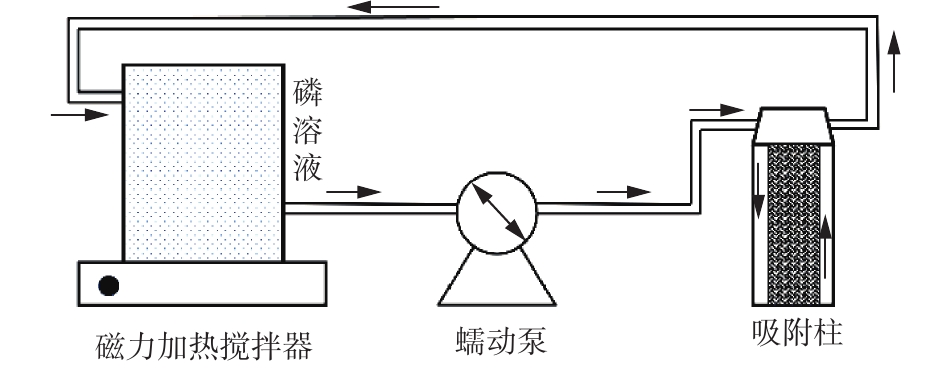
 下载:
下载:
